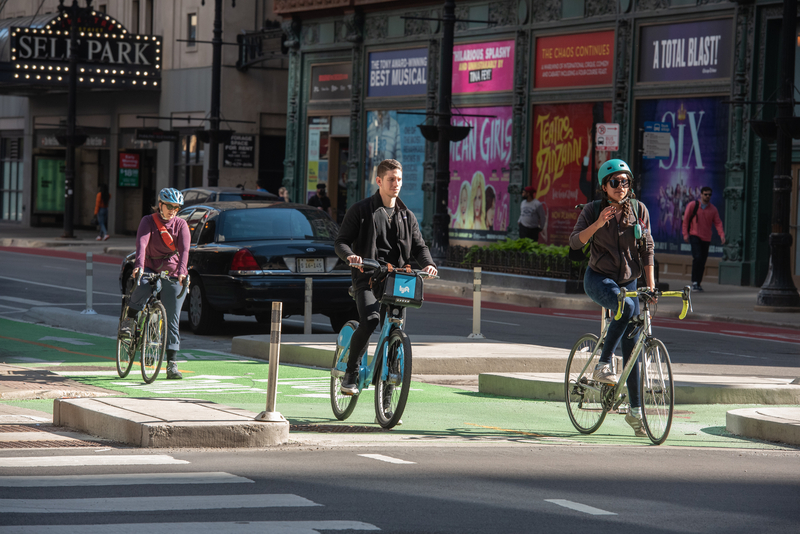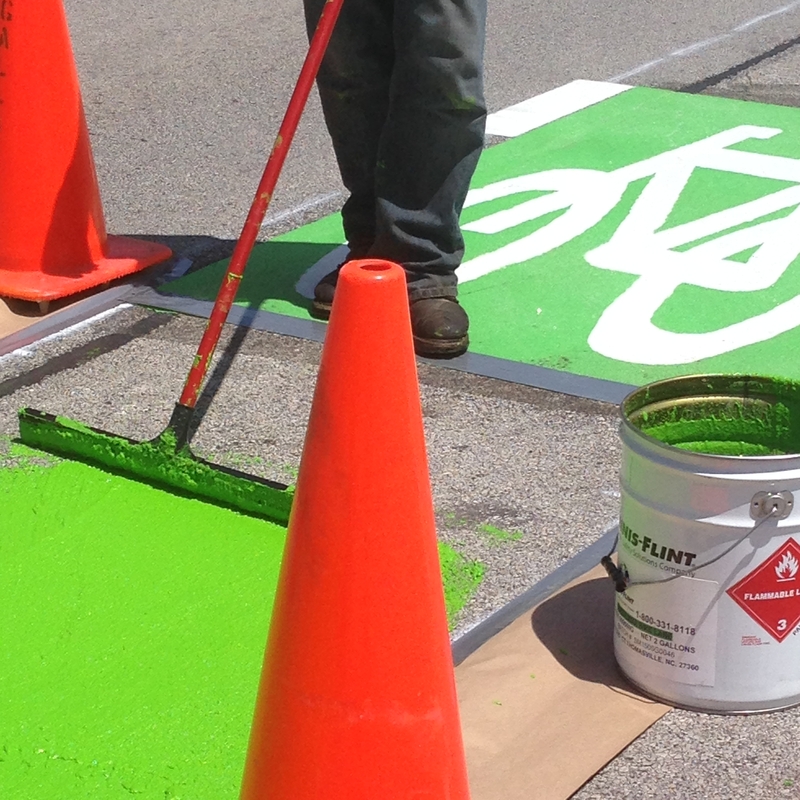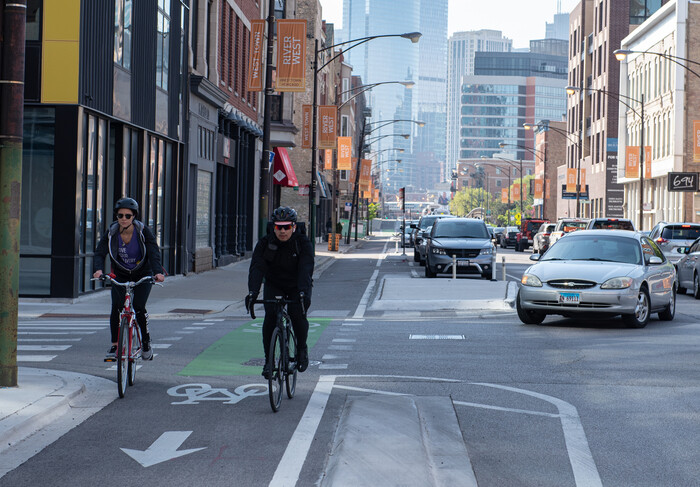While Chicago still has a long way to go before it has a citywide, connected network of protected bike lakes (PBLs), it’s certainly making progress.
In the past year, Chicago streets have benefited from a surge in the number of protected bike lanes.
This not only boosts safety for everyone on the road, but also gets us closer to a future where biking becomes an inviting, stress-free experience for everyone, irrespective of age or ability.
The rise in crashes involving people walking and biking across Chicago has triggered more awareness of the need for safer infrastructure on our streets. PBLs provide much-needed protection, but, unfortunately, the problem is that most PBLs have been built in short sections and fail to give people consistent protection throughout their bike trip.
A common safety concern is when a PBL exists for a short stretch and then the bike lanes merge with traffic without any protection.
As study after study has shown, feeling safe throughout a bike trip is the prime motivator when it comes to getting more people on bikes.
CDOT’S ACCELERATED PROGRESS
With construction season coming to an end, we want to acknowledge the work that the Chicago Department of Transportation (CDOT) has been doing to install safe infrastructure across Chicago.
Thanks in part to the efforts of Active Transportation Alliance and other advocates, CDOT announced in 2022 that all existing PBLs would get concrete protection. In addition to the upgrades, new PBLs have been installed.
In 2022, CDOT installed about 10 miles of new concrete PBLs and upgraded 15 miles of existing PBLs. Building on that momentum, by the end of 2023, CDOT will have installed about 4 miles of new concrete PBLs and upgraded about 14 miles of existing PBLs.

A SAFER MILWAUKEE AVENUE
Former Mayor Lori Lightfoot laid the groundwork for much of this work when she passed the Chicago Works capital plan. The plan, which included $238 million for Complete Streets projects, has funded many of the PBL projects recently installed.
Milwaukee Avenue, known as the busiest cycling street in the city, is finally becoming a PBL corridor as sections of the street get upgraded with concrete protection. In particular, the stretches between Armitage and Western avenues and North and Damen avenues been upgraded with PBLs.
TWO AGENCIES WORKING BETTER TOGETHER
At the beginning of the year, CDOT and the Illinois Department of Transportation (IDOT) signed a memorandum of understanding to streamline implementation of safety improvements on streets in Chicago.
The partnership accelerates creating safer streets by pre-approving infrastructure designs that will benefit people walking and biking.
One project that was a result of the agreement is the Jackson Boulevard PBL between Oakland Boulevard and Ogden Avenue. Since Jackson is a under IDOT’s jurisdiction, implementing a PBL on Jackson would not have been feasible before the agreement.
Updating roadway designs to reduce speeding and crashes on wide roads like Jackson is needed to reduce the number of pedestrian and cyclist fatalities.

A NEW EAST-WEST ROUTE
Traveling across communities east or westbound feels unsafe for many. Barriers like the Chicago River and various expressways (as well as their access points) often makes the experience feel perilous.
One newly installed east-west connection is the concrete curb PBL on Augusta Boulevard between Milwaukee and Western avenues.
Let’s hope this is just the beginning of an effort to install more PBLs to create safe alternative routes when traveling east and west.
CLEAR PLAN STILL NEEDED
While we applaud this progress, we’re still faced with the reality that most of the city’s streets that connect neighborhoods are not safe or comfortable for biking.
There should be a clear plan by the city to prioritize a connected bike grid and a connected PBL network to move people from point A to point B safely and comfortably.
You can track the recent progress on CDOT’s website, where you’ll find updates for ongoing and completed bike infrastructure projects.
The list of projects — a resource that advocates have been pushing for — is an important step toward greater transparency.
Second photo down courtesy of Steven Gross.

